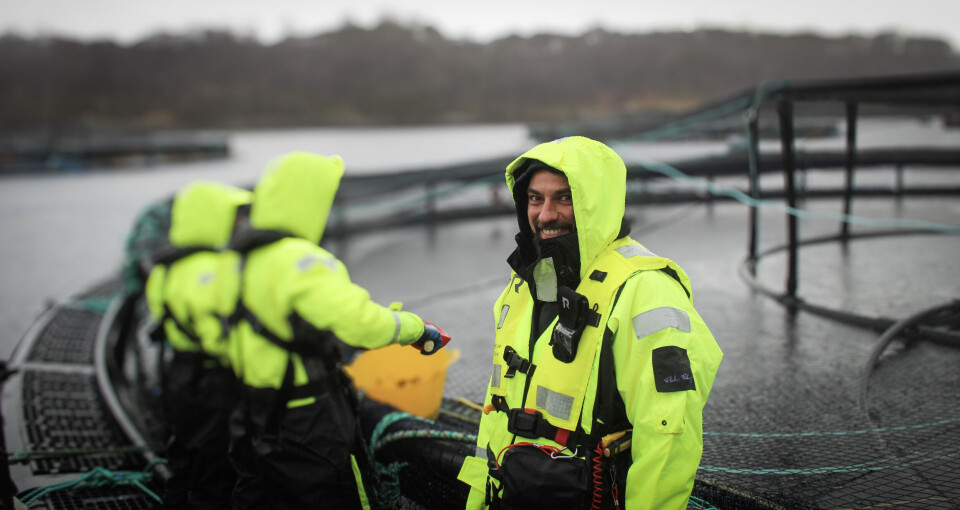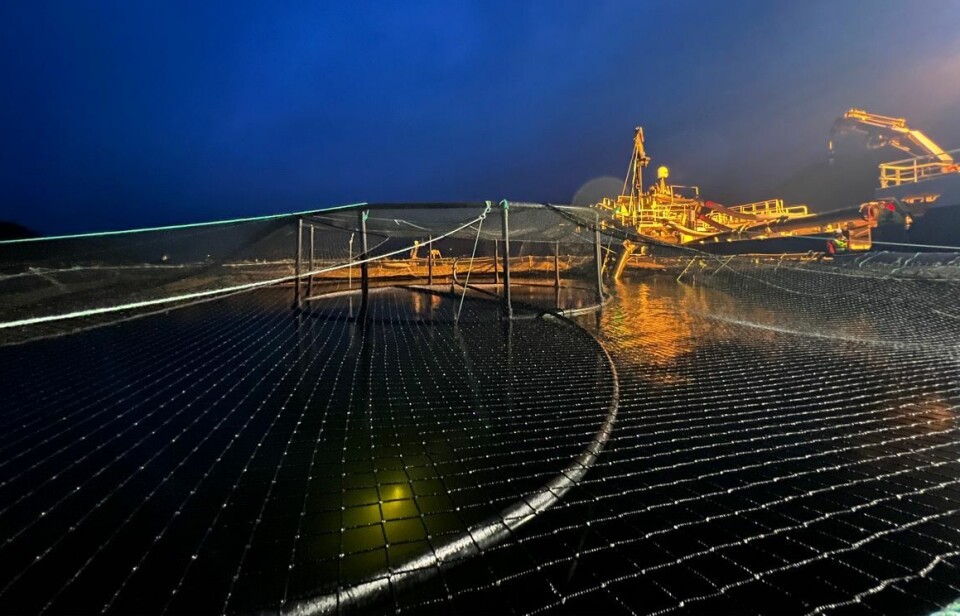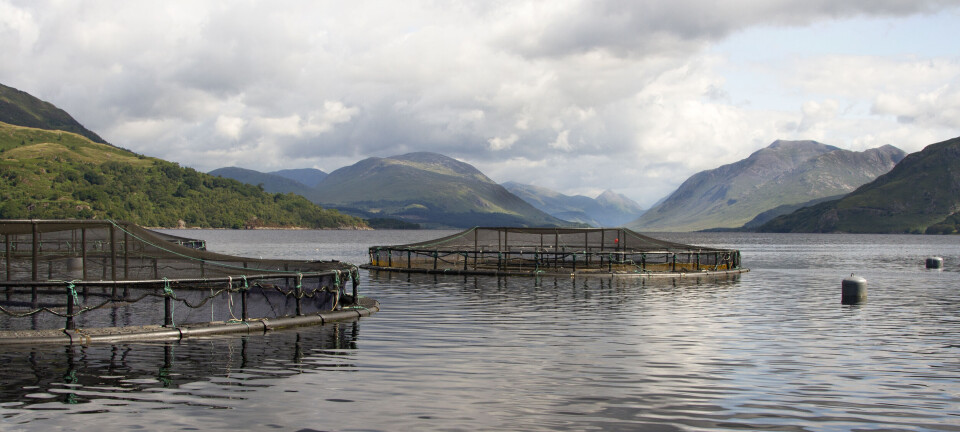
Mowi goes big with first cycle of large post-smolts
Fish are set to stay in low-salinity sites in Loch Etive for seven months to avoid summer jellyfish threat and will reach 1kg before transfer
Mowi Scotland has taken a significant step towards overcoming changing environmental conditions by starting to grow its first batch of large post-smolts in Loch Etive.
Like some other fish farmers in Scotland, Norway, and the Faroes, Mowi Scotland has decided to grow its fish to a larger size before stocking them in marine pens so it can reduce the time that they spend exposed to environmental challenges such as gill-damaging amoebas, sea lice, and micro jellyfish.
But unlike most other companies, it will raise the post-smolts in open net pens in Loch Etive rather than an expensive land-based recirculating aquaculture system (RAS). It acquired the Etive sites when it bought trout producer Dawnfresh Farming last year.
Two crops per year
Mowi Scotland intends to produce two crops of large post-smolts per year in the loch, which has lower salinity than most sea lochs and is a more difficult environment for lice which fare best in full seawater. Mowi believes that factor, combined with synchronised fallowing of all Loch Etive sites between post-smolt cycles, will negate or substantially mitigate any lice issues.

We control a lot in a RAS facility, but RAS is a life support system that brings its own issues in terms of fish performance and fish health and security. We’re still farmers of the seas, and that’s where our skillset is.
The first fish were stocked last week and will be grown for seven months before transfer to marine sites, by which times they will have an average weight of more than a kilogram.
“The first batch will be big because we’re looking to send them out to Muck and Rum at the end of September to avoid the jellyfish issues that we see out there,” Mowi Scotland boss Ben Hadfield told Fish Farming Expert.
“The second lot will be smaller – around 400g - because they’ll be in there for less time.”
Freshwater lochs
Mowi already uses freshwater lochs as nursery sites for fish hatched at its Lochailort and Inchmore RAS facilities, and Hadfield is a strong advocate of that method.
“Generally, it’s better (in a loch). We control a lot in a RAS facility, but RAS is a life support system that brings its own issues in terms of fish performance and fish health and security. We’re still farmers of the seas, and that’s where our skillset is,” said Hadfield.
“We use a hybrid model where we send out vaccinated parr at 60g and then we grow them on in the lochs. It creates a smolt which is higher quality, slightly lower cost, and more sustainable because it doesn’t require the same electricity use: the sustainability credentials of farming in freshwater lochs are fantastic in Scotland.”
Homegrown eggs
Guaranteeing the quality and availability of ova is another priority for Mowi, which is building a broodstock facility at Ardessie in Wester Ross to provide out-of-season ova. Work on the site commenced just before Christmas.
Fish descended from Mowi’s own broodstock in Ireland perform much better than those hatched from bought-in ova, said Hadfield, but the Irish ova – and those more recently spawned in Scotland – are not suitable for the big RAS hatcheries at Lochailort and Inchmore all year round.

Ova were spawned in Scotland this year but had to be taken to Mowi’s smaller, older hatcheries, particularly the one at Carnasserie in Argyll, rather than Lochailort or Inchmore, said Hadfield.
“What we need is out-of-season eggs for the recirculation units. Because they’re warmer it’s difficult to grow eggs that have just come from a natural season. We’ve got our breeding base in Ireland working well, numbers have come up, supplying a lot of our own eggs to Mowi Scotland this year from Ireland, selling some eggs to the wider sector [but] we don’t have enough out-of-season eggs,” he explained.
Most robust
Securing that year-round supply of Mowi ova is crucial.
“Basically, on Mowi stock we have averaged about 15% mortality (in the seawater stage) and I’m disappointed to say that on third-party stock – which is not just one stock type – it’s more than double the Mowi mortality,” said Hadfield.
“The Mowi stock in terms of robustness in Scotland outperforms everything. The last thing you want in a difficult farming environment is stock which inherently has a lower robustness. A big part of making Scottish salmon farming is domestic egg supply. Mowi stock stands out clearly as the most robust stock type you can get your hands on, and we need to multiply those out-of-season eggs through the Ardessie building.”
























































